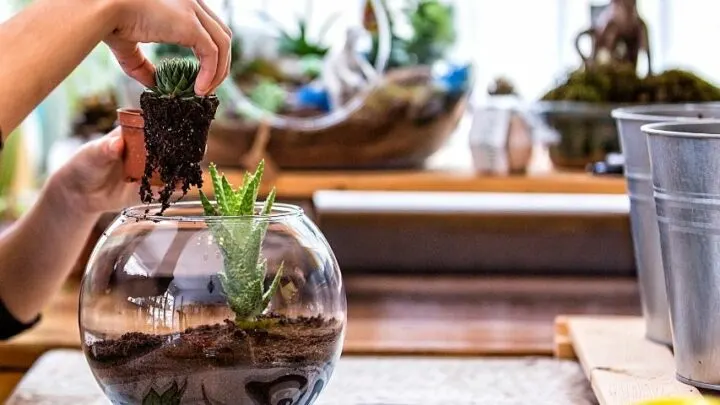Terrariums are an easy, inexpensive, and natural way to decorate your home. A glass enclosure is ideal for growing small plants in warm, humid climates with low light requirements.
Such plants can take care of themselves; therefore, you don’t need to pay extra attention or time to help them grow in a sealed container.
Moreover, they don’t need too much fertilization as they grow slowly.
Also, selecting the right terrarium plant can be quite challenging as there are various options to choose from.
This is why we have enlisted the 30 best Plants for Terrariums that are easy to maintain and make your place look beautiful.
30 Best Plants for Terrariums
- Polka dot plants
- Miniature ferns
- Watermelon Peperomia
- Mini spider plants
- Nerve plants
- Miniature English ivy
- Golden pothos
- Venus flytraps
- Miniature Jewel Orchids
- Friendship Plant
- Earth Star
- Button Fern
- Fluffy Ruffles Fern
- Creeping Fig
- Peacock Fern
- String of Turtles
- Silver Ribbon Fern
- Flame Violet
- Dwarf Arrowhead Vine
- Aluminum Plant
- Moon Valley Pilea
- Little Tree Plant
- King Begonia
- Artillery Plant
- Prayer Plant
- Baby Tears
- Purple Passion Plant
- Air Plant
- Bloodleaf iresine
- African Violet
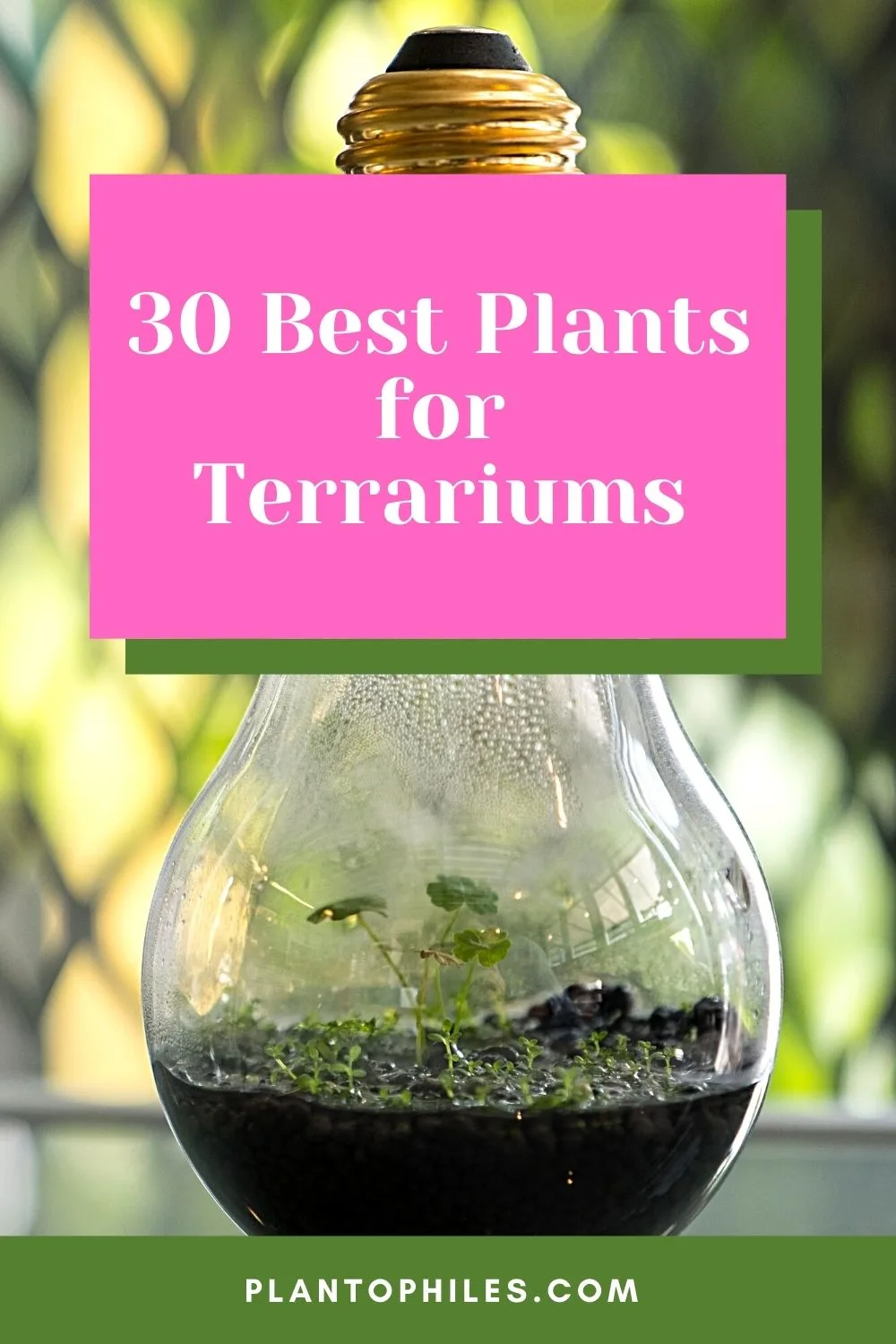
Another great plant for terrariums is Callisia repens. It builds thick carpets. It also goes by Turtle Vine and can cover large areas in vivariums.
Best Terrariums Plants
1. Polka Dot Plants
If you are looking to add some color and interest to your home, the polka dot plant will be your right choice.
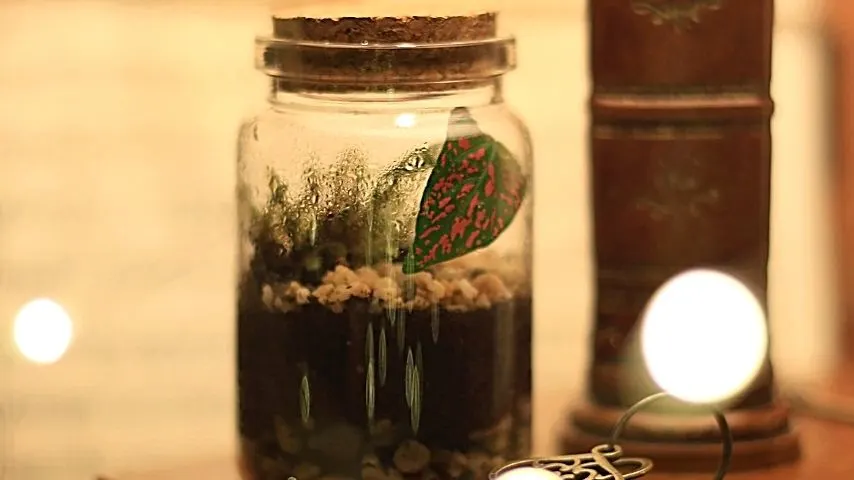
They are perfect for enclosed containers as they survive the humidity, don’t get much taller, and are colorful. The variegated leaves of this tropical plant have red, white, or pink blotches that cheer up any space.
To avoid making the stems leggy, regularly prune your polka dot plant.
Polka dot plants flower from late summer to fall according to the University of Wisconsin.
The binomial nomenclature of polka dot plants includes:
- Scientific name: Hypoestes phyllostachya
- Family: Acanthaceae
- Temperature: 70° – 75°F (21.11° – 23.88°C)
- Soil: Well-draining, organically rich soil. Enhance its drainage by adding pumice or perlite.
- pH: 6.1 – 7.3
- Environment: Warmth and humidity
- Humidity: 60% – 90%
2. Miniature Ferns
Miniature Ferns are great for enclosed terrariums as they thrive in humid, warm, and low-light environments.
Look for ferns that grow slowly and don’t shoot up to above 12” (30 cm), so they are ideal for closed containers. Prune your ferns occasionally to keep them to a reasonable length.
A few ferns that grow best in terrariums are:
Lemon Button Fern
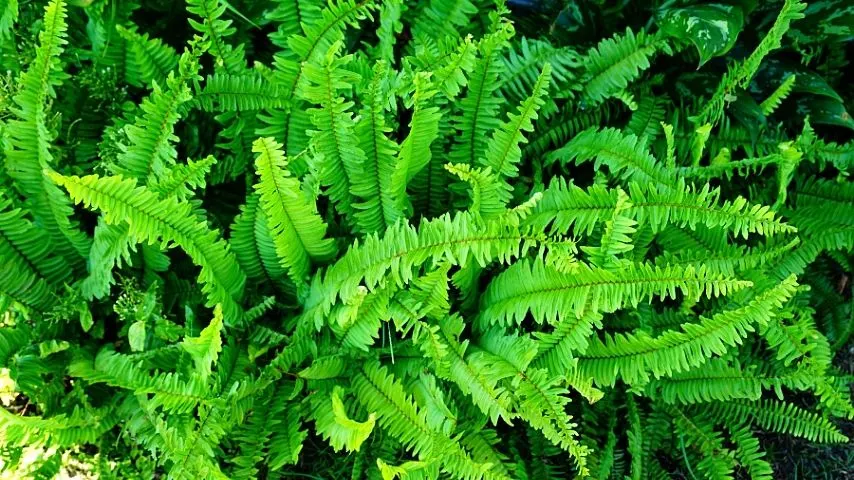
Their scientific name is Nephrolepis Cordifolia. They love humidity and moisture and are therefore perfect for closed terrariums.
Lemon Button Fern thrives in a temperature range between 60° – 80°F (15.55° – 26.66°C).
Dwarf Holly Fern
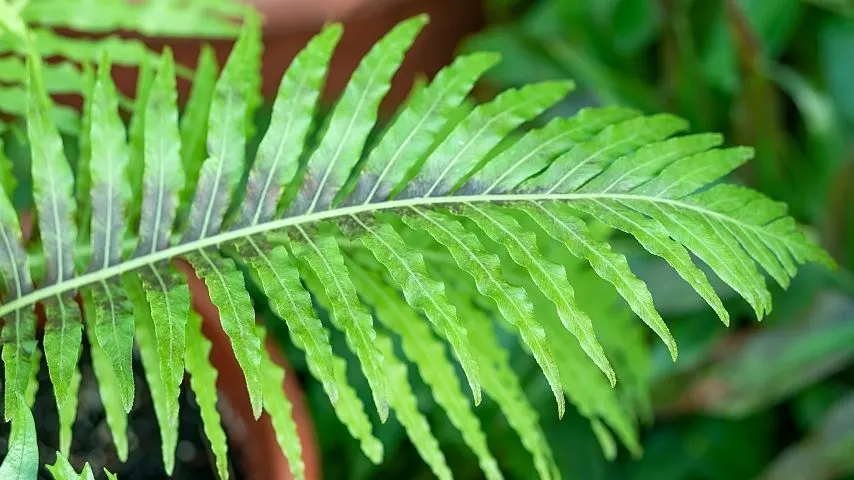
They are scientifically known as Cyrtomium falcatum. They don’t exceed 12” (30 cm) and are slow-growing, making them ideal for closed terrariums.
Its pinnate, arching leaves are light green and require a temperature range of 65° – 80°F (18.33° – 26.66°C).
Maidenhair Fern
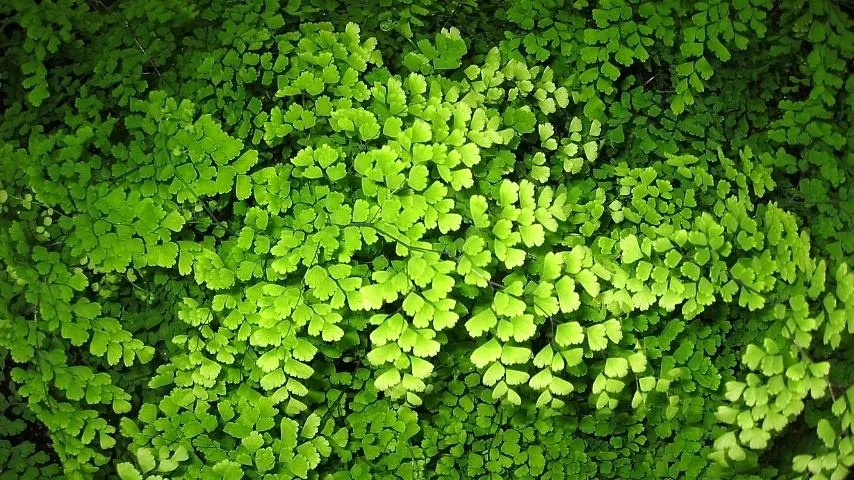
They are scientifically known as Adiantum aethiopicum. They grow best in humid, warm environments and are slow-growing.
Maidenhair Ferns have small, fan-shaped leaves that are light green. The ideal temperature for these ferns ranges from 60° – 70°F (15.55° – 21.11°C).
3. Watermelon Peperomia
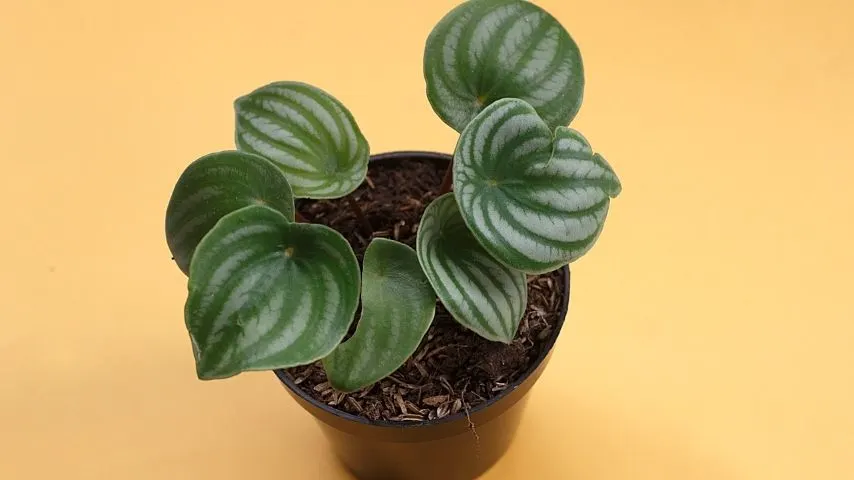
Peperomias are famous terrarium plants since they have elegant foliage, are compact, and love humid, warm environments.
There is a wide range of peperomias to choose from; however, watermelon peperomia is the best among all closed terrariums. They have oval-shaped leaves having patterns that are similar to watermelon skin.
The binomial nomenclature of Watermelon peperomia includes:
- Scientific name: Peperomia argyreia
- Family: Piperaceae
- Temperature: 55° – 80°F (12.77° – 26.66°C)
- Soil: Well-draining, potting soil. A mixture of perlite and peat moss.
- pH: 6.0 – 6.5
- Environment: Warm and humid
- Humidity: 40% – 50%
4. Mini Spider Plant
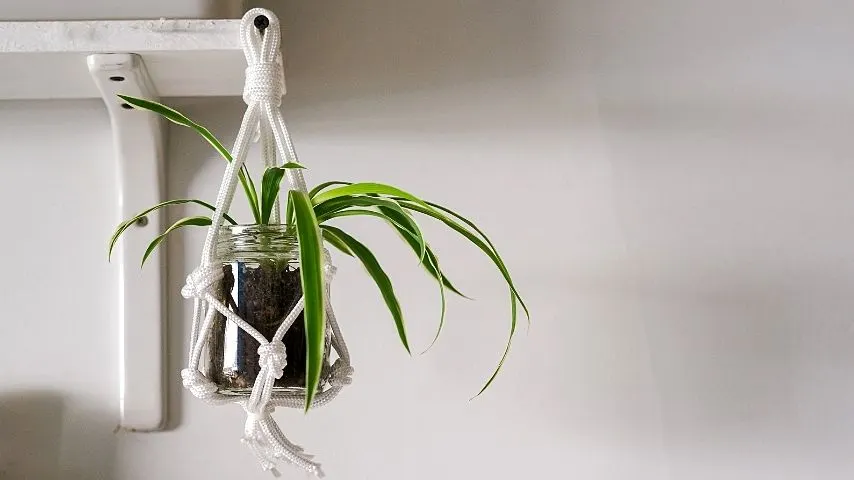
Spider plants are among the most common houseplants as they help brighten and perk up the place.
Spider plants aren’t fussy with maintenance and thrive in various types of environments, which is perfect for terrariums.
The miniature spider plant (Chlorophytum Comosum Variegatum) is the smallest species of these plants. Their dark green leaves and white edges create a more interesting look for your home.
The binomial nomenclature of mini spider plant includes:
- Scientific name: Chlorophytum comosum
- Family: Asparagaceae
- Temperature: 65° – 90°F (18.33° – 32.22°C)
- Soil: Well-draining, loamy, and moist soil
- pH: 6.0 – 6.5
- Environment: Warm, moist, and humid
- Humidity: 40% – 60%
5. Nerve Plants
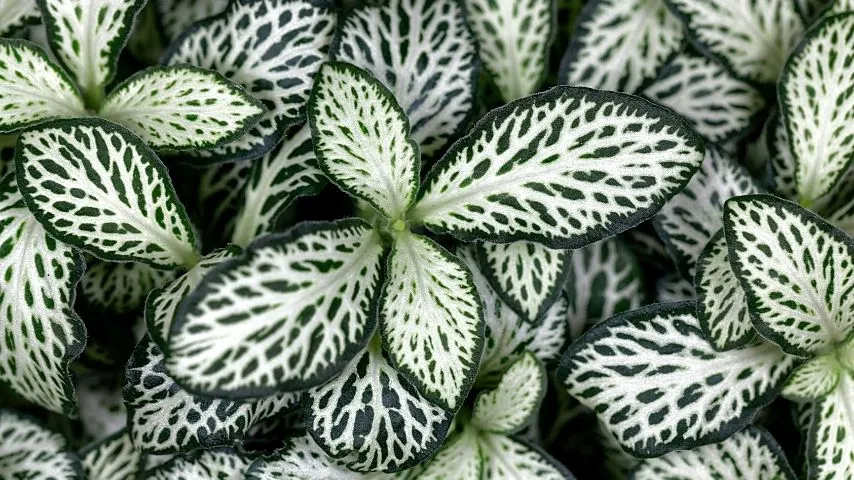
Nerve plants brighten up closed terrariums because of their unique, colorful leaves. Their leaves are dark green with pink, deep red, lime-green, or creamy-white veins.
They are perfect for terrariums as they grow only up to 6” (10 cm) in length and consist of compact foliage.
The binomial nomenclature of nerve plant includes:
- Scientific Name: Fittonia albivenis
- Family: Acanthaceae
- Temperature: 60° – 80 °F (15.55° – 26.66 °C)
- pH: 6.5
- Soil: well-draining, peat-based soil
- Environment: moist and humid
- Humidity: 60% – 90%
6. Miniature English Ivy
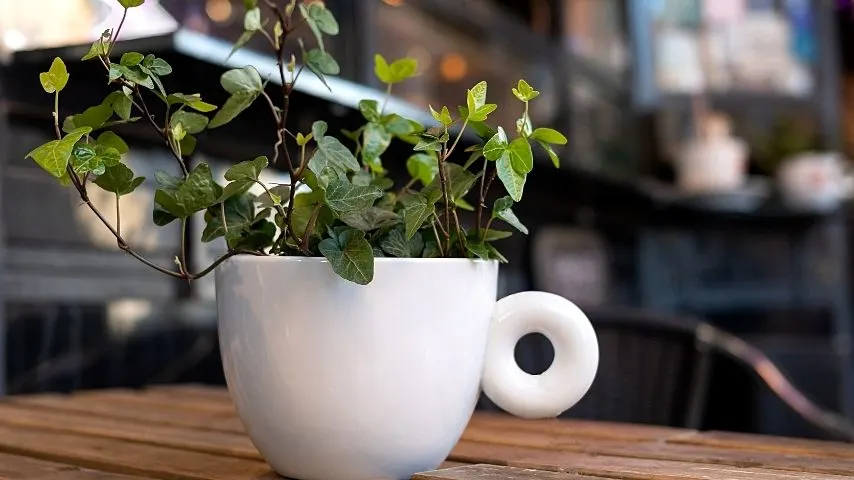
Mini English Ivy is a perfect choice for terrariums as they are small in size and can survive warm and humid environments.
They have beautiful green and white leaves that can either grow as a ground cover or climb up the walls of your terrarium.
The binomial nomenclature of mini English ivy includes:
- Scientific Name: Hedera helix
- Family: Araliaceae
- Temperature: 70° – 90 °F (21.11° – 32.22 °C)
- pH: 6.0 – 7.8
- Soil: well-draining, loamy soil
- Environment: warm and humid
- Humidity: 40% or higher
7. Golden Pothos
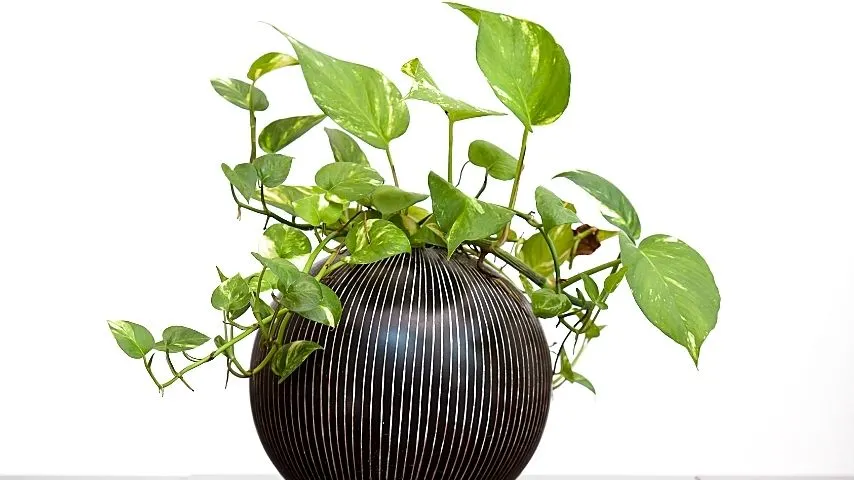
Golden pothos is a beautiful vine plant ideal for closed terrariums as it adapts to warm, humid environments and low lighting.
It likes climbing the walls of a closed terrarium and gives your home an appealing look because of its yellow, pale green, or white leaves and colorful foliage. However, they require regular pruning.
The binomial nomenclature of golden pothos includes:
- Scientific Name: Epipremnum aureum
- Family: Araceae
- Temperature: 70° – 90 °F (21.11° – 32.22 °C)
- pH: 6.1 – 6.5
- Soil: Soil has a mixture of perlite, vermiculite, or peat moss and must be well-draining
- Environment: warm and humid
- Humidity: 50% – 70%
8. Venus Flytraps
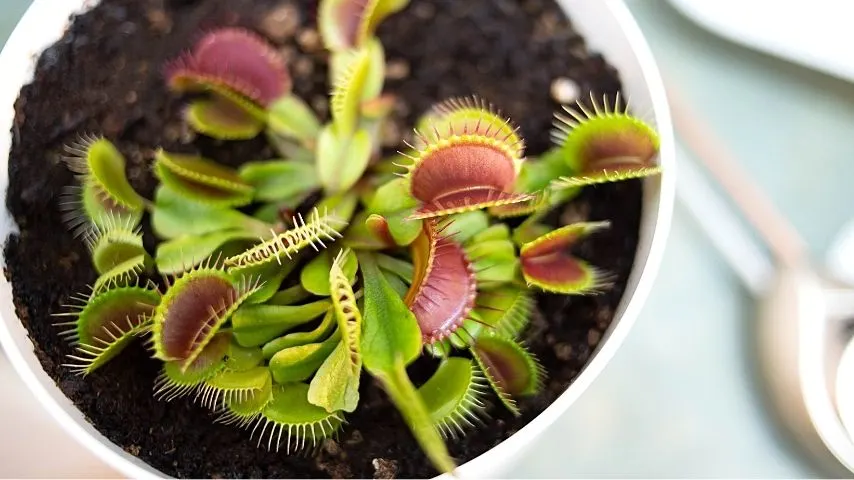
Venus Flytrap is a carnivorous plant that will make your terrarium look like an actual tropical garden. They are hungry plants and must be fed with humidity and moisture to survive.
However, Venus Flytraps are not for beginners and will sometimes require you to put in a few small flies to feed them.
The binomial nomenclature of venus flytraps includes:
- Scientific Name: Dionaea muscipula
- Family: Droseraceae
- Temperature: 70° – 95 °F (21.11° – 35 °C)
- pH: 4.9 – 5.3
- Soil: well-draining soil with peat moss and perlite
- Environment: moist and humid
- Humidity: Above 50%
9. Miniature Jewel Orchids
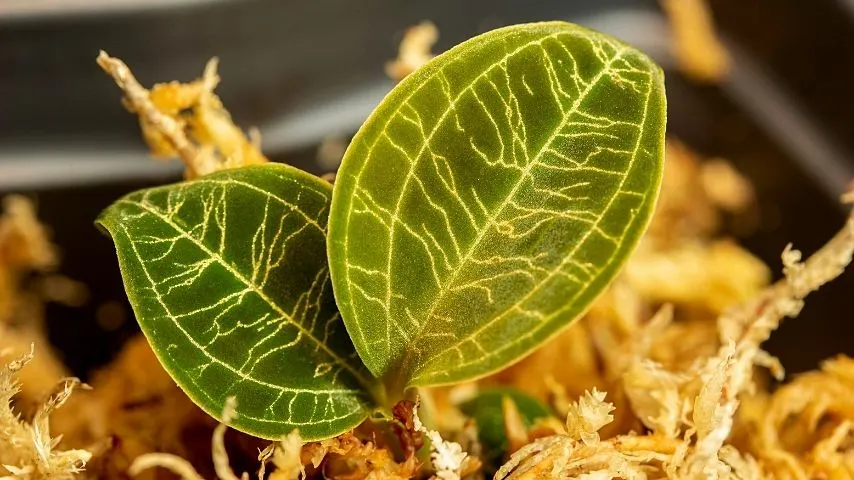
Miniature orchids are perfect if you want an elegant floral display in your terrarium. The most popular miniature orchid that can easily be grown in closed containers is a miniature jewel orchid.
The binomial nomenclature of miniature jewel orchid includes:
- Scientific Name: Ludisia discolor
- Family: Orchidaceae
- Temperature: 70° – 80 °F (21.11° – 26.66 °C)
- pH: 6.0 – 7.0
- Soil: well-draining soil with peat moss, perlite, and orchid potting soil
- Environment: warm and humid
- Humidity: 60% – 90%
10. Friendship Plant
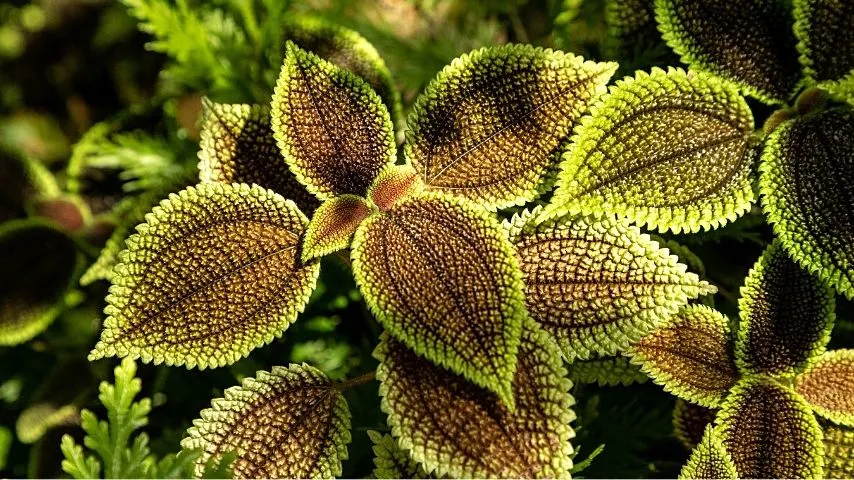
The friendship plant is one of the pilea plants and grows well in terrariums as they require low light, moist soil, and warm temperature.
This bushy plant must have high humidity to survive.
The binomial nomenclature of friendship plant includes:
- Scientific Name: Pilea involucrata
- Family: Urticaceae
- Temperature: 65° – 75 °F (18.33° – 23.88 °C)
- pH: 5.0 – 6.0
- Soil: well-draining, rich soil with peat moss and perlite mix
- Environment: warm and humid
- Humidity: 60% – 90%
11. Earth Star
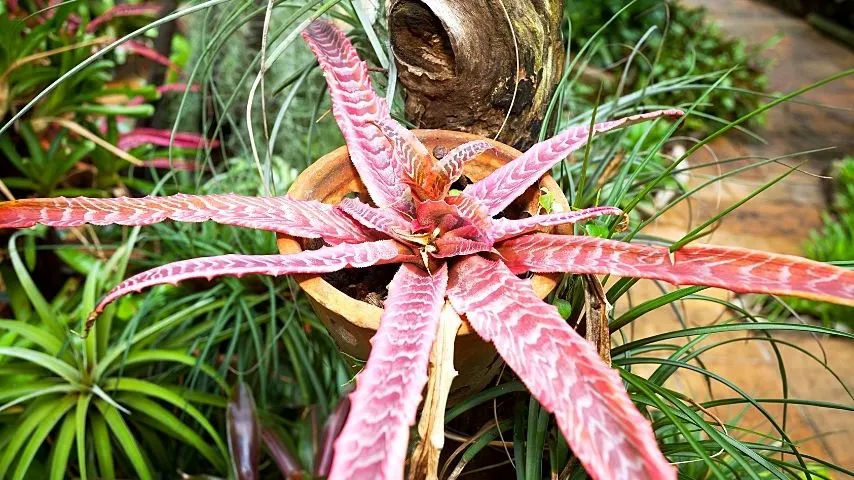
The earth star plants come in a wide range of colors and have attractive foliage that makes your terrarium look visually appealing.
Their leaves are star-shaped and may be reddish-purple, deep green, or pale green. They are easy to grow and enjoy room temperature and low light.
The binomial nomenclature of earth star includes:
- Scientific Name: Geastrales
- Family: Geastraceae; Corda
- Temperature: 60° – 85 °F (15.55° – 29.44 °C)
- pH: 4.0 – 6.0
- Soil: well-draining, moist, bromeliad potting mix soil
- Humidity: 50%
12. Button Fern
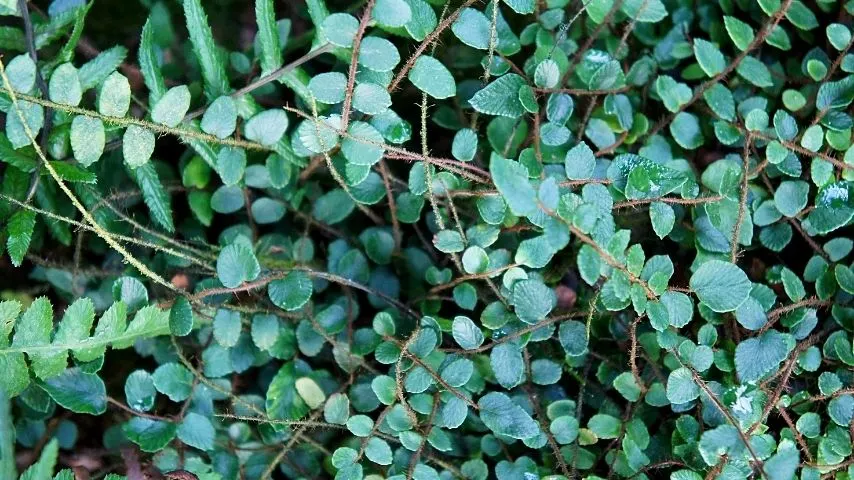
The small button fern looks terrifically appealing in a closed terrarium. They’re easy to grow compared to other members of the fern family since they only require little maintenance.
Small, circular, leathery leaves develop along the thin stem.
The binomial nomenclature of button fern includes:
- Scientific Name: Pellaea rotundifolia
- Family: Pteridaceae
- Temperature: 60° – 75 °F (15.55° – 23.88 °C)
- pH: 5.0 – 6.0
- Soil: well-draining, peat-based soil mixed with perlite
- Humidity: 60% – 90%
13. Fluffy Ruffle Fern
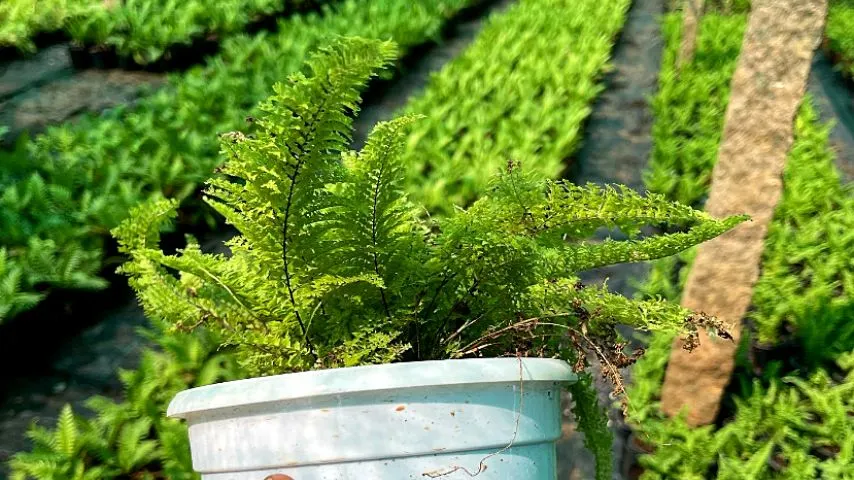
The fluffy ruffle fern is a delightfully thick fern having splendid sword-shaped leaves.
Its dwarf variety is perfect for closed terrariums as it only reaches up to 12” (30 cm) tall and has a fluffy texture.
The binomial nomenclature of fluffy ruffle fern includes:
- Scientific Name: Nephrolepis exaltata
- Family: Lomariopsidaceae
- Temperature: 60° – 80 °F (15.55° – 26.66 °C)
- pH: 5.0 – 6.0
- Soil: equal parts of garden soil, peat moss, or perlite
- Humidity: 70% – 90%
14. Creeping Fig
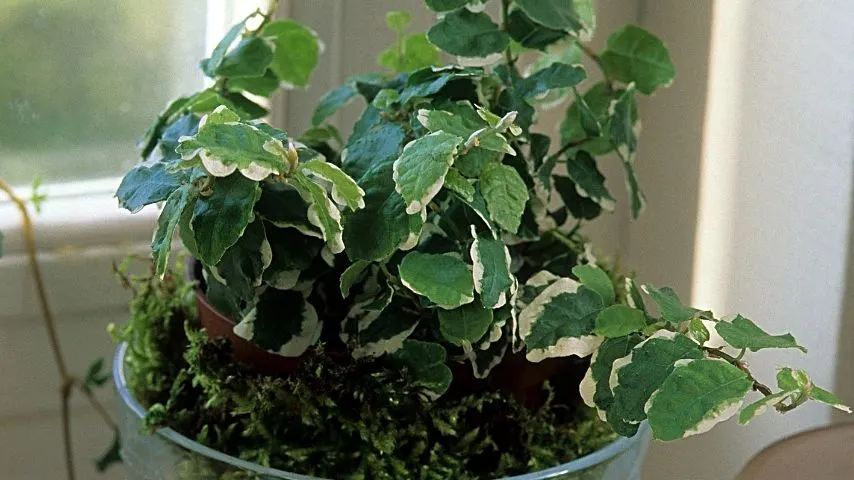
The Creeping Fig has small and variegated heart-shaped leaves that can be a beautiful addition to your closed terrarium.
Being a climbing perennial, you must keep it in a large container to enjoy how it creeps up the terrarium’s walls. Creeping Fig is super easy to propagate.
The binomial nomenclature of Creeping Fig includes:
- Scientific Name: Ficus pumila
- Family: Mulberry family
- Temperature: 65° – 85 °F (18.33° – 29.44 °C)
- pH: 6.1 – 7.8
- Soil: any well-draining potting soil
- Humidity: 60% – 90%
15. Peacock Fern
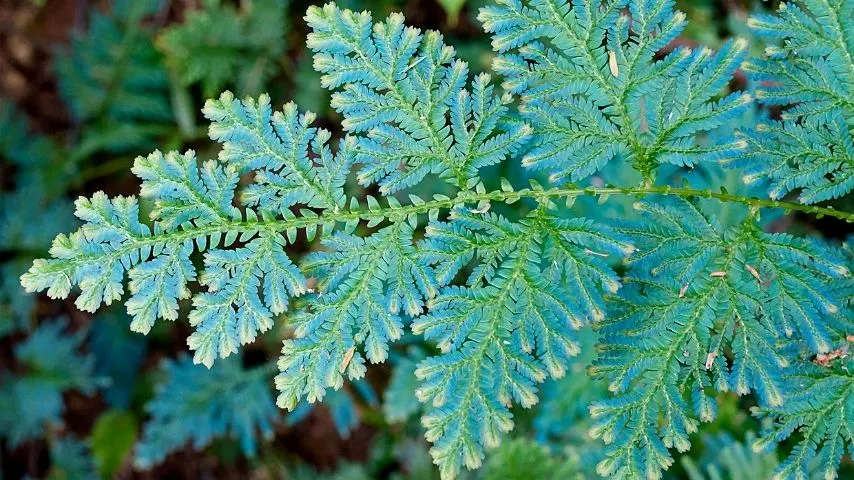
Peacock fern is not really a fern but a moss. Hence, it’s also called Peacock Spikemoss or Blue Spikemoss.
The plant doesn’t need to be submerged fully in water, making them a good fit for terrariums. They’re easy to grow, making them suitable for beginners.
The binomial nomenclature of Peacock fern includes:
- Scientific Name: Selaginella uncinata
- Family: Selaginellaceae
- Temperature: 55° – 80 °F (12.77° – 26.66 °C)
- pH: 7.0
- Soil: rich, compost or humus-rich soil
- Humidity: 50% – 90%
16. String of Turtles
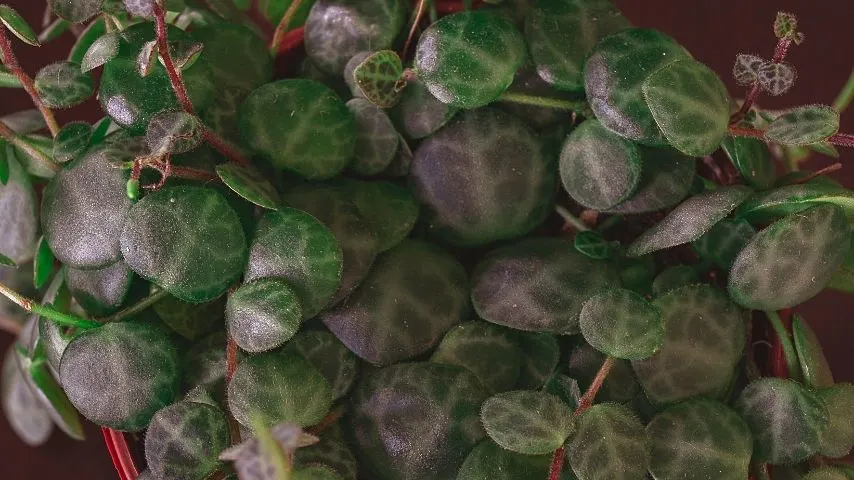
The String of Turtles is a famous, semi-succulent plant well-suited for terrariums, hanging baskets, or indoors. It is also called Jade Necklace and can grow in various conditions.
The binomial nomenclature of the String of Turtles includes:
- Scientific Name: Peperomia prostrata
- Family: Piperaceae
- Temperature: 68° – 75 °F (20° – 23.88 °C)
- pH: 7.0 – 5.0
- Soil: well-draining soil with rich peat moss and half perlite
- Humidity: 50% or more
17. Silver Ribbon Fern
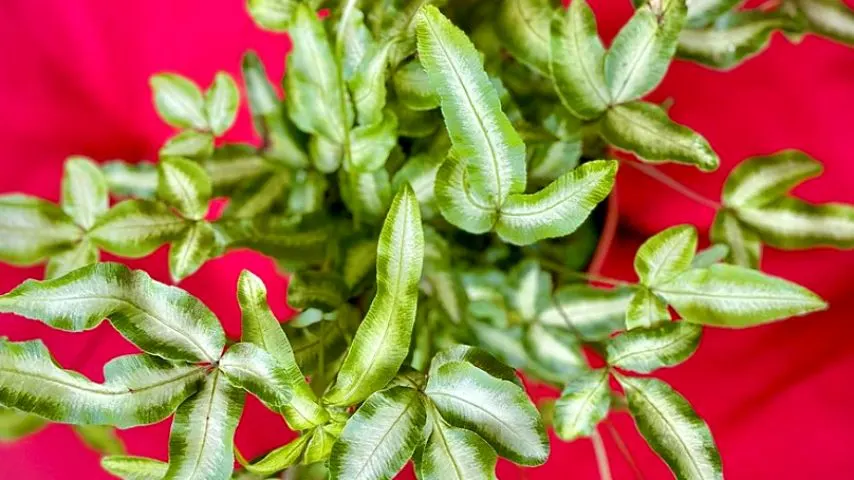
The silver ribbon fern is a unique, gorgeous-looking plant that displays a wide range of colors, unlike other ferns.
Besides its appearance, the silver ribbon fern is highly tolerant and easy to care for.
The binomial nomenclature of the silver ribbon fern includes:
- Scientific Name: Pteris cretica ‘Albolineata’
- Family: Pteridaceae
- Temperature: 55° – 75 °F (12.77° – 23.88 °C)
- pH: 6.5 – 7.8
- Soil: Potting soil that is well-draining and contains perlite and peat moss
- Humidity: 60% – 90%
18. Flame Violet
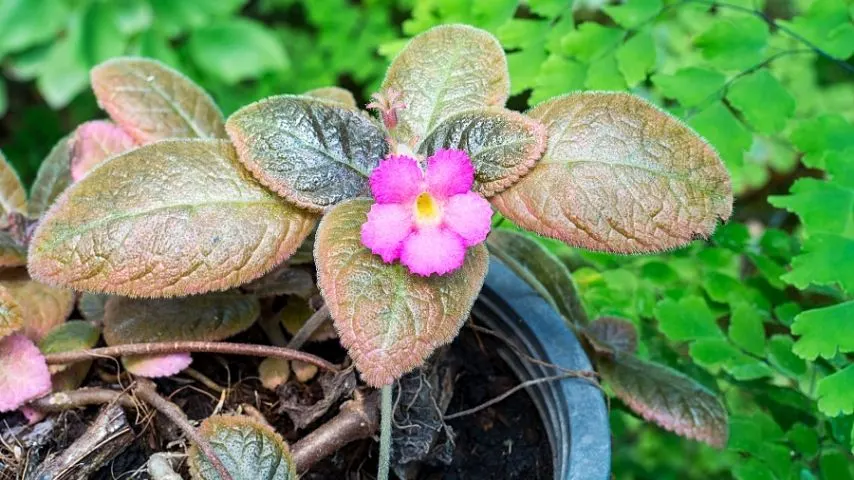
The Flame Violet is also known as Chocolate Soldier Plant and is hard to find in a local garden store.
The leaves of this plant are mainly shimmery and have different markings of pink, chocolate brown, silver, and every tone of green.
They also produce elegant blooms in almost every color, including red, yellow, pink, orange, purple, and white.
Terrariums and glass containers are perfect for them as they love humidity and enhance their beauty. Moreover, they need a moderate quantity of water; therefore, don’t let it stay in highly wet or arid soil.
The binomial nomenclature of the flame violet includes:
- Scientific Name: Episcia cupreata’
- Family: Gesneriaceae
- Temperature: 55° – 65 °F (12.77° – 18.33 °C) at night and below 75 °F (23.88 °C) during the day
- pH: 6.0 – 6.5
- Soil: African violet soil. Peat moss and perlite soil for quick drainage
- Humidity: above 50%
19. Dwarf Arrowhead Vine
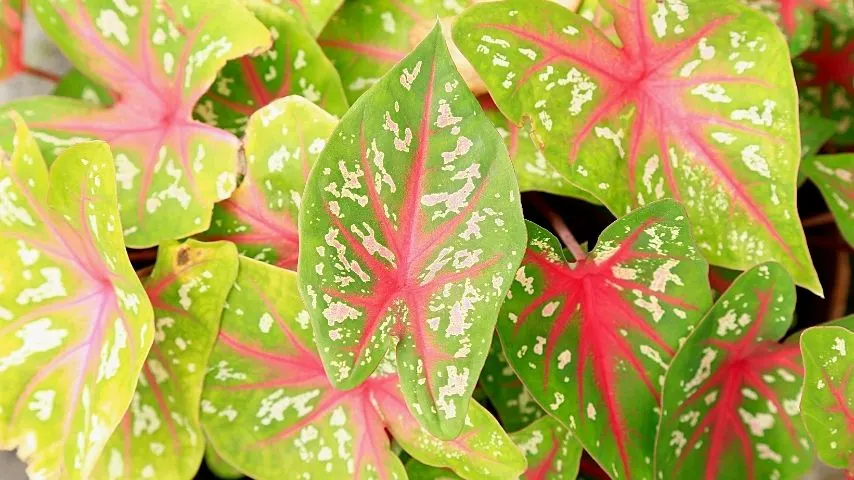
People often find the dwarf arrowhead vine the cutest among houseplants because of its tiny leaves. It has heart-shaped leaves with creamy-white centers and may be equal to the size of a fingernail.
These plants thrive in average home-level humidity and grow well in a 2-3” (5 – 8 cm) container.
The binomial nomenclature of dwarf arrowhead vine includes:
- Scientific Name: Syngonium podophyllum
- Family: Araceae
- Temperature: 65° – 75 °F (18.33° – 23.88 °C)
- pH: 5.5 – 6.5
- Soil: Well-draining and moist potting soil mixed with perlite and orchid bark
- Humidity: 60% – 90%
20. Aluminium Plant
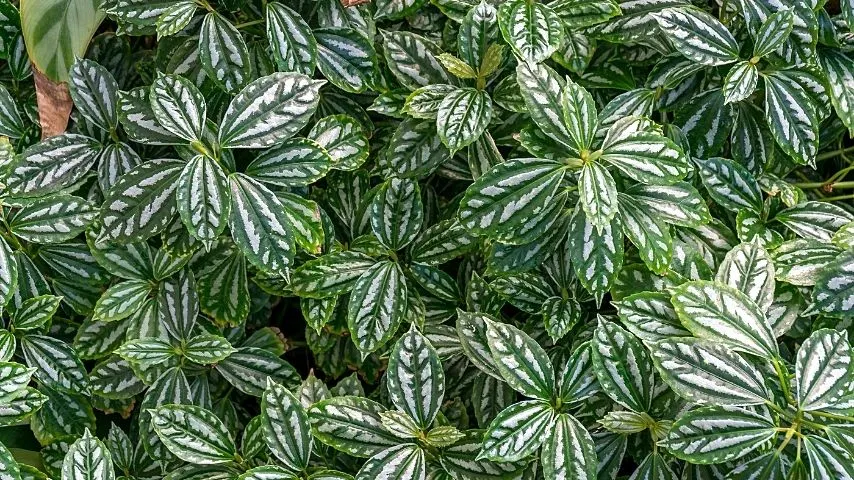
Aluminum plants are visually pleasing and pretty easy to look after. Each leaf of this plant grows separately from the ground and folds out like an umbrella.
The leaves are thin, oval-shaped, and organized in opposite pairs. The base of every leaf is green with a unique silver pattern.
The binomial nomenclature of aluminum plant includes:
- Scientific Name: Pilea Cadierei
- Family: Urticaceae
- Temperature: 60° – 75 °F (15.55° – 23.88 °C)
- pH: 6.0 to 7.0
- Soil: One part of sand with two parts of perlite
- Humidity: 70% – 80%
21. Moon Valley Pilea
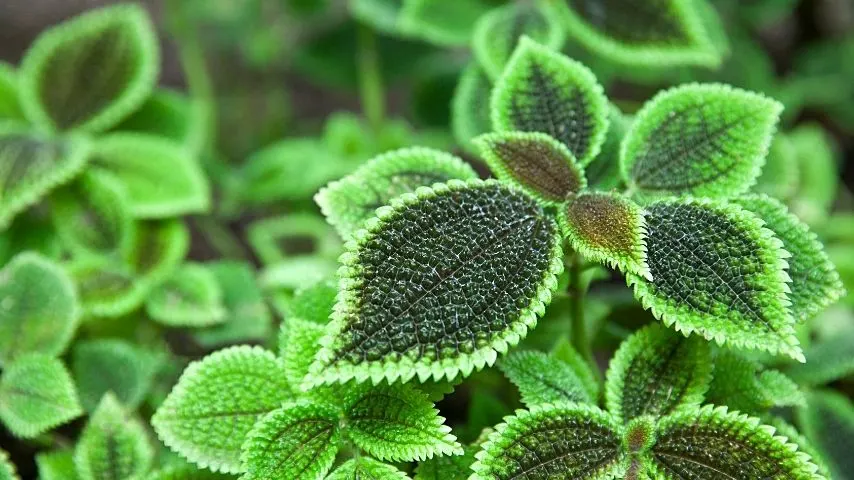
The Moon Valley Pilea is a highly terrarium-friendly plant because it requires lots of humidity. The plant grows upright and resembles the moon in appearance due to its blistered leaves.
Moon valley plants placed in terrariums must be kept away from bright or direct sunlight.
The binomial nomenclature of the moon valley plant includes:
- Scientific Name: Pilea mollis
- Family: Urticaceae
- Temperature: 62° – 65 °F (16.66° – 18.33 °C) at night and nearly 85 °F (29.44 °C) during the day
- pH: 5.0 – 6.0
- Soil: African violet or peat moss based soil
- Humidity: Above 50%
22. Little Tree Plant
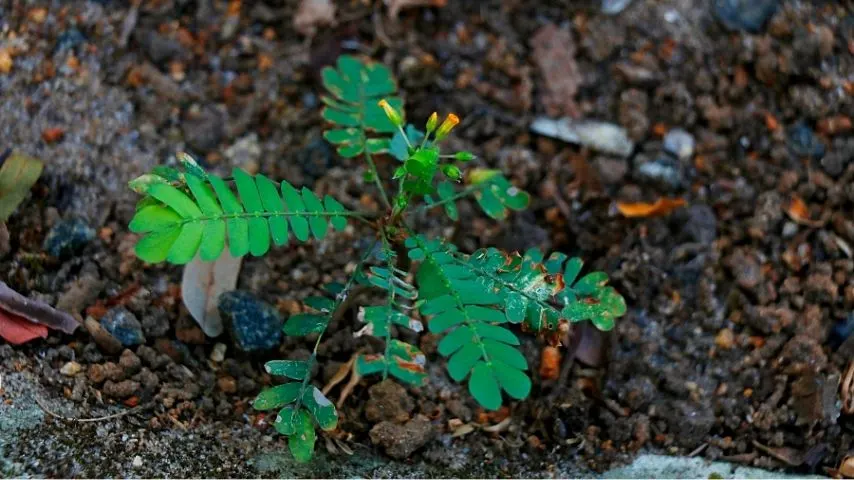
The little tree plant is a small, beautiful mini palm-like plant that is well-suited for small containers like terrariums and can give you a tropical jungle experience.
It is a moisture-loving plant and therefore thrives in closed containers.
The binomial nomenclature of the little tree plant includes:
- Scientific Name: Biophytum sensitivum
- Family: Oxalidaceae
- Temperature: 60° – 80 °F (15.55° – 26.66 °C)
- pH: 4.6 – 5.0
- Soil: Substrate mix having coco coir or sphagnum moss
- Humidity: 60% – 90%
23. King Begonia
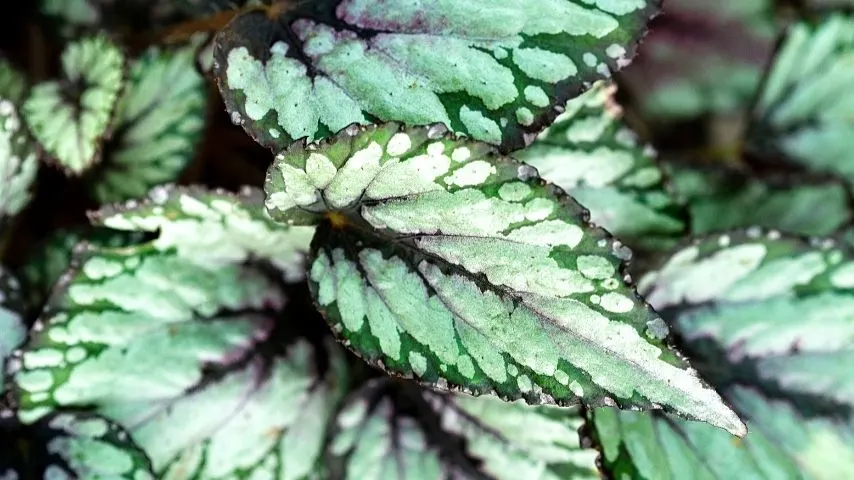
King Begonia is popular for its lovely painted patterns present on its foliage. It needs high humidity, indirect light, and peaty soil to thrive.
Furthermore, it doesn’t like wet soil so make sure the soil becomes a little dry between waterings.
The binomial nomenclature of the Rex Begonia includes:
- Scientific Name: Begonia rex
- Family: Begoniaceae
- Temperature: 60° – 70 °F (15.55° – 21.11 °C)
- pH: 5.7 – 6.2
- Soil: well-draining soil with peat moss, perlite, and vermiculite
- Humidity: 50%
24. Artillery Plant
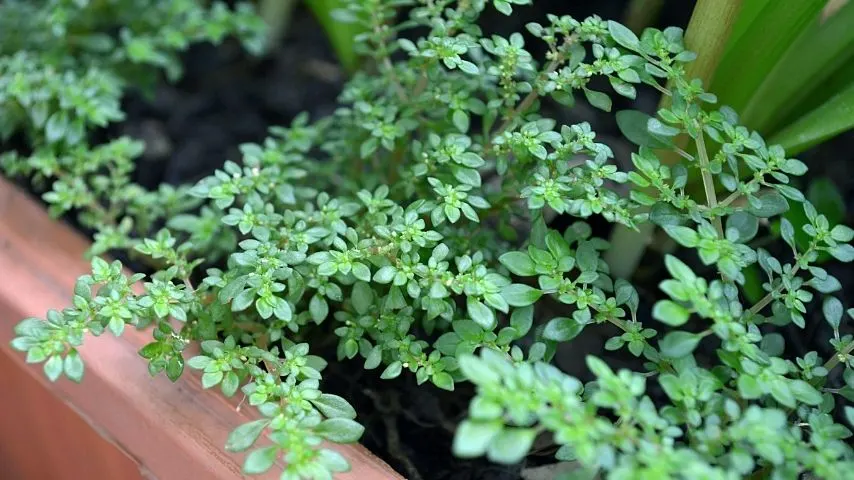
The artillery plant consists of small, light-green leaves on sturdy stems. They can make your place brighten up when placed in a closed terrarium.
This plant grows well in moderate lighting and moist soil. Artillery plant needs to be pruned when it starts outgrowing their space.
The binomial nomenclature of the artillery plant includes:
- Scientific Name: Pilea microphylla
- Family: Urticaceae
- Temperature: 70° – 75 °F (21.11° – 23.88 °C)
- pH: 5.0 – 6.0
- Soil: well-draining, loose, and moist soil
- Humidity: 50%
25. Prayer Plant
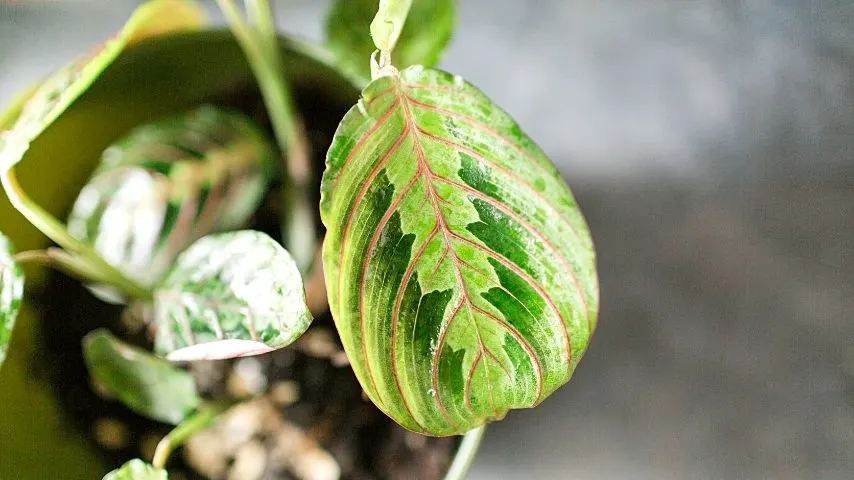
The Prayer Plant, often known as the Ten Commandments, has purple, velvety dark green, and reddish leaves that fold during dusk. It can sometimes produce purplish or white flowers.
The binomial nomenclature of the prayer plant includes:
- Scientific Name: Maranta leuconeura
- Family: Marantaceae; R.Br.
- Temperature: 68° – 85 °F (20° – 29.44 °C)
- pH: 5.5 – 6.0
- Soil: any well-draining soil
- Humidity: 60%
26. Baby Tears
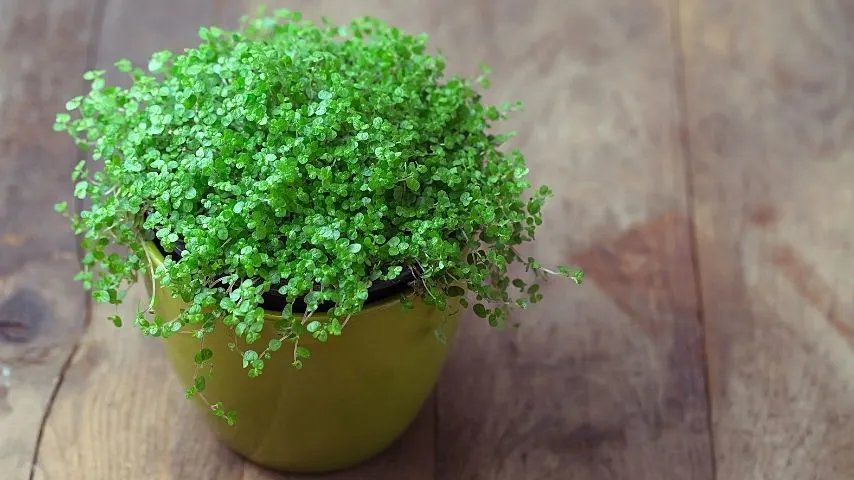
The baby tears plant is an excellent choice for terrariums as they need high humidity, and glass terrariums are perfect for fulfilling this requirement.
The plant looks like moss and has tiny rounded green leaves on fleshy stems.
They grow best in moderate lighting and moist soil. The best thing about the baby tears plant is that it’s super easy to maintain an can ultimately add interest to your home.
They mainly grow up to 6” (15 cm) in height. Since these plants require adequate air circulation, ensure you don’t close the container when planting it inside.
The binomial nomenclature of the prayer plant includes:
- Scientific Name: Micranthemum callitrichoides
- Family: Scrophulariaceae
- Temperature: 60° – 75 °F (15.55° – 23.88 °C)
- pH: 5.0 – 6.0
- Soil: any potting soil that is a little moistened
- Environment: Very humid
- Humidity: 75%
27. Purple Passion Plant
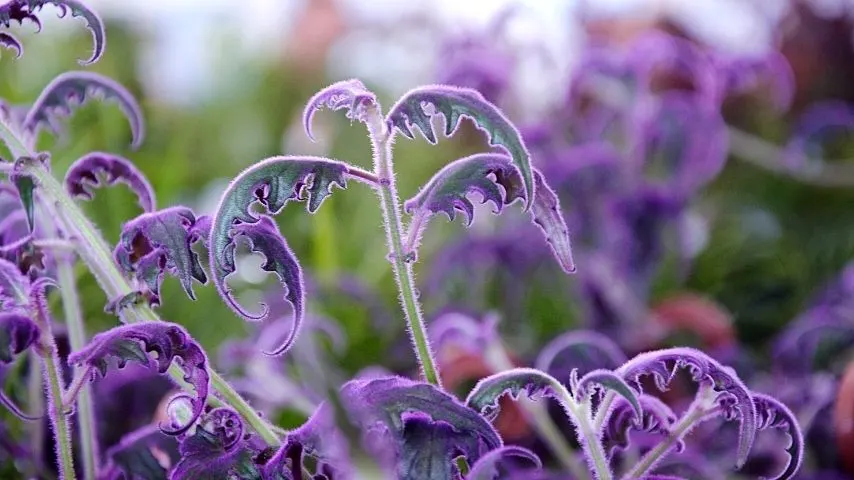
If you want to add a bit of color and interest to your home, the purple passion plant is a good fit for your terrarium. It is an uncommon and visually pleasing plant that thrives in indirect but bright light.
They consist of purple leaves due to thick hair, but the color becomes less intense as the hair spreads apart.
The soil must be well-draining because the plant is prone to root rot due to excessive water.
The binomial nomenclature of the purple passion plant includes:
- Scientific Name: Gynura aurantiaca
- Family: Asteraceae
- Temperature: 60° – 70 °F (15.55° – 21.11 °C)
- pH: 6.5 – 7.5
- Soil: well-draining soil with 1 part of sand and 2 parts of peat moss
- Humidity: above 50%
28. Air Plant
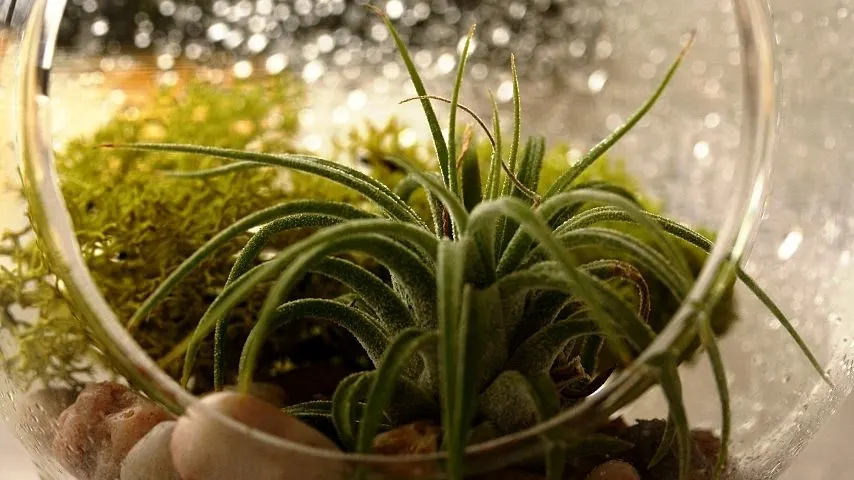
Growing air plants in terrariums is a whole lot of fun. As you don’t need soil as the base of air plants, there is a wide range of options to choose your favorite bottom.
To name a few, you can add decorative sand, preserved reindeer moss, seashells, marbles, small rocks, bark, etc., in any color.
However, it is essential to note that whatever base you opt for should be dry, as these plants don’t do well in a moist environment.
The binomial nomenclature of the air plant includes:
- Scientific Name: Tillandsia
- Family: Bromeliaceae
- Temperature: 50° – 90 °F (10° – 32.22 °C)
- Humidity: around 65%
29. Bloodleaf Plant
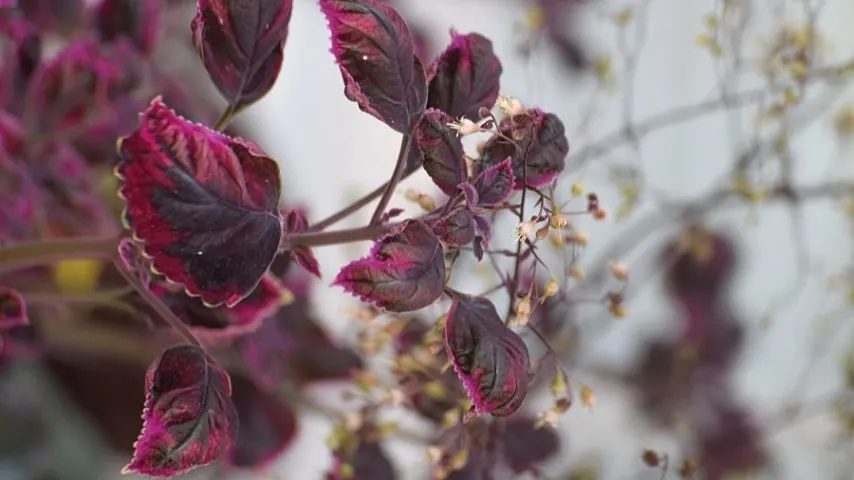
Growing bloodleaf plants in terrariums is an excellent idea if you want to get an intense pop of color at your place. Although it is not a common plant, it looks incredibly gorgeous because of its colors.
It can grow up to 12” (30 cm) tall, making them ideal for terrariums. Younger plants need partial shade; however, they can tolerate low lighting as they grow.
The binomial nomenclature of the bloodleaf plant includes:
- Scientific Name: Iresine
- Family: Amaranthaceae
- Temperature: 50° – 60 °F (10° – 15.55 °C)
- pH: 5.6 – 5.9
- Soil: loamy, regular potting soil mixture
- Humidity: above 50%
30. African Violet
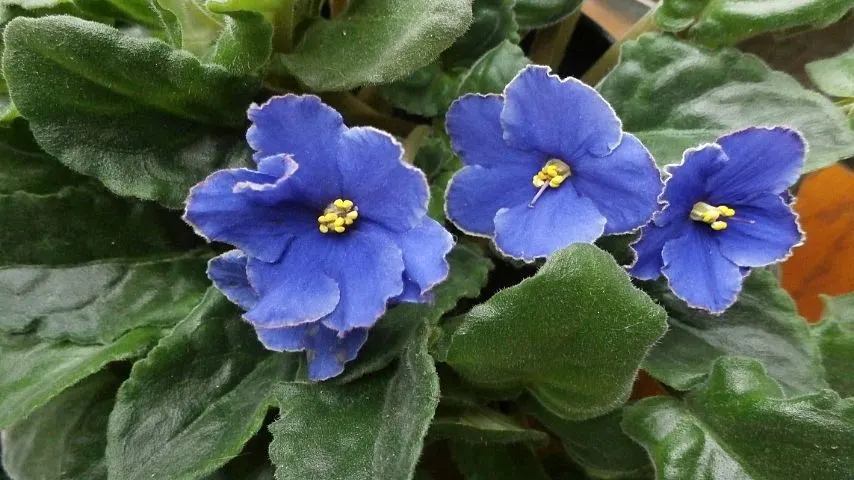
African violet is a lovely plant with purple flowers that are hard to thrive in any open pot.
They need a warm, humid environment; therefore, they are perfect for growing in terrariums.
The binomial nomenclature of the African violet plant includes:
- Scientific Name: Saintpaulia
- Family: Gesneriaceae
- Temperature: 65° – 80 °F (18.33° – 26.66 °C)
- pH: 5.8 – 6.2
- Soil: well-draining soil with a mixture of peat moss, vermiculite, and perlite
- Humidity: above 80%
Read about the best plants for chameleons next.

Daniel has been a plant enthusiast for over 20 years. He owns hundreds of houseplants and prepares for the chili growing seasons yearly with great anticipation. His favorite plants are plant species in the Araceae family, such as Monstera, Philodendron, and Anthurium. He also loves gardening and is growing hot peppers, tomatoes, and many more vegetables.

